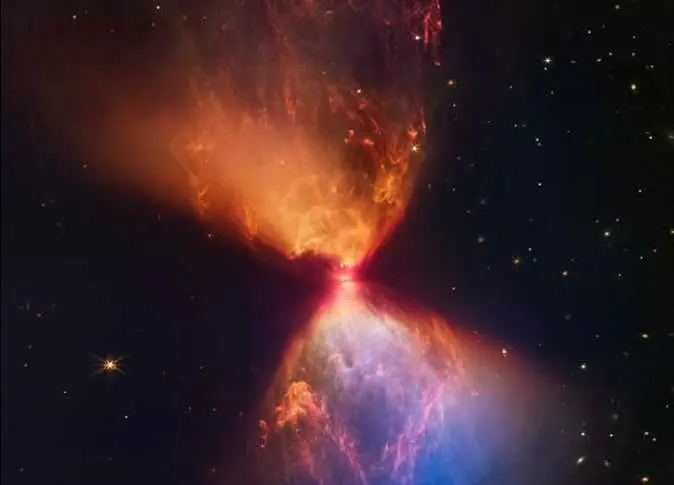It is 100,000 years old and looks like an hourglass. Watch the amazing moment of the birth of a young star

These previously unseen orange and blue clouds were detected by the NIRCAM instrument of the James Webb Space Telescope.
The James Webb Space Telescope on Wednesday revealed stunning new images it captured of a huge hourglass-shaped cloud of dust around a forming star.
These orange and blue clouds, which had not been seen before, were spotted by the telescope's "Nircam" instrument, which operates in the near infrared that is not visible to the human eye.

The protostar, called Protostar L1527, is in the constellation Taurus and is obscured by the tip of a rotating disk of gas at the neck of the hourglass.
The US space agency (NASA) and the European Space Agency said in a joint statement that the light from this star "leaks" from above and below the disk, allowing the surrounding dust to be illuminated.
The clouds are created by the collision of material ejected from the star with the surrounding material. The dust layer is thinner in the blue sections, while it is thicker in the orange sections.
The protostar is only 100,000 years old and is in the early stage of its formation, and is not yet able to generate its own energy.
As for the black disk surrounding it, which is roughly the size of our solar system, it will provide the protostar with materials until it reaches "the quantity needed to start nuclear fusion," according to the statement of the two agencies.
"Ultimately, this view of L1527 provides an idea of what the sun and our solar system looked like in their early stages," the statement added.
Located 430 light-years from Earth, the Taurus molecular cloud is home to hundreds of forming quasars.
James Webb, whose first color images were revealed in July, takes pictures of the universe while fixed 1.5 million kilometers from Earth.
One of the main goals of this $10 billion telescope is to study the life cycle of stars.
Source: websites

